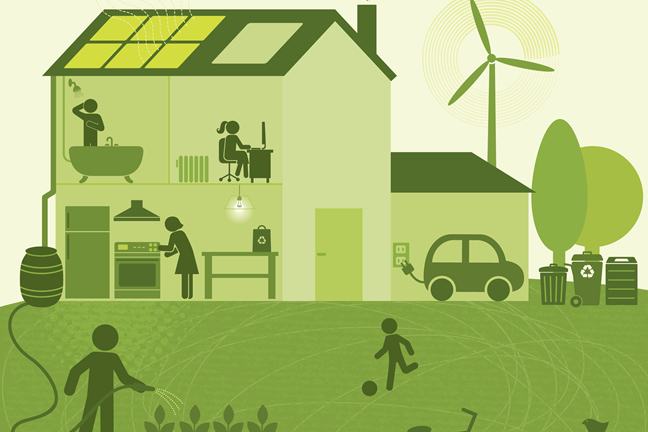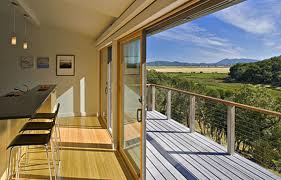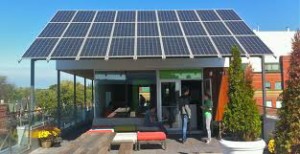Cities are coming up at a massive scale across the world, rural infrastructure is being replaced by the modern, urban infrastructure. This is causing a massive push to the construction sector as we see buildings coming up around us all the time. Be it new houses, new office areas, old houses and old buildings being renovated into new, all we see are just cities of concrete. These buildings require a lot of energy, right from the stage of the raw material production, the transport of that raw material, running those buildings on a daily basis and then ending up as demolished debris.
United Nations Environment Program’s Sustainable Buildings and Climate Initiative states that buildings use about 40% of global energy, 25% of global water, 40% of global resources and they emit approximately one-third of green-house gas emissions. Residential and commercial buildings use up almost 60% of the world’s electricity. They also generate huge amounts of degradable and non-degradable wastes that are incessantly piling up on landfills.
It is thus, essential today that we have green and sustainable buildings.
What are Green Buildings?
A green building can be defined as one whose construction and lifetime of operation assures the healthiest possible environment while representing the most efficient and least disruptive use of land, water, energy and resources. To put it simply, a green building will use less water, optimize energy usage, conserve natural resources, generate less waste and provide healthier space for occupants, as compared to conventional building.
A house to be truly sustainable has to consider the environmental, the social and the economic considerations. And these need to be done in design, construction, and in use. However, for most housing that is actually considered sustainable at the moment, is housing that is, in effect, energy efficient. And energy efficient housing often rely on technological innovation. This is an example of a passive house. Passive houses are radically changing the way we design and construct housing. Passive houses are super-insulated buildings, built according to exacting standards. They have excellent insulation in all materials– triple-glazed windows, for example, are built to maximise solar gains and to allow in lots and lots of natural light. Their energy bills are hugely reduced and, of course, as a result, their carbon footprints of the end-use building are dramatically reduced. Besides energy efficiency we need to inculcate other environment-friendly aspects as well.
What kind of material is used?
Green buildings use materials that are reused, recycled, low-emission and use minimum chemical synthesis material. The building material should be natural and least processed, so that building material consumes least energy in its processing. These buildings must use healthy material such that it is low pollution and low physiological hazard like environmental friendly paint. Recycled building material should be low energy consuming, low carbon dioxide and low pollution discharge, and reusable.
For instance, instead of the conventional clay bricks, fly ash bricks should be used. Fly ash is an industrial waste from thermal power plants and bricks made out of it are environment friendly and keep buildings cooler. On the other hand, glass buildings are a big no-no as glass structures heat up quickly and then require excessive air-conditioning to keep the building cool. You must have seen that majority of the corporate buildings are just glass and steel structures – they end up having high energy usage. Thus we need to ensure balanced usage of glass because we do need it for allowing natural lighting too, which reduces dependence on artificial lighting during the day.
Wastewater should be recycled for use in toilets and gardens, and rainwater harvesting must be integral to the design. Also energy should come from renewable resources, like solar panels and LED lights can be used for efficiency.
One such example of a green building in India is the Development Alternatives office in New Delhi and I have had the privilege of witnessing its marvel. It is a truly regenerative living ecosystem that aims at zero emissions. It has undertaken all aspects discussed of a green building but one unique feature that I want to highlight is the use of hybrid air-conditioning, which cuts down the use of energy and water up to 40%. The temperature inside the office remains around 18 degrees in winters and 28 degrees during summers due to technique called Indoor climate control.
Some Green Building Rating Standards in India
1) Indian Green Building Council (IGBC) is a part of the CII (Confederation of Indian Industry) – Sohrabji Godrej Green Business Centre and promotes green building concept in India. It certifies green buildings in the country, under categories of homes, townships, SEZ, and factory building.
2) LEED (Leadership in Energy and Environmental Design)-India Green Building Rating System is a national and international level benchmark for the design, construction and operation of high performance green buildings. It promotes a holistic and sustainable approach by recognizing performance in 5 areas, namely, sustainable site development, water savings, energy efficiency, materials selection and indoor environmental quality.
3) GRIHA (Green Rating for Integrated Habitat Assessment) rating system was developed by TERI and adopted by the Ministry of New and Renewable Energy in 2007 as the national rating system for green buildings. This system helps in designing and evaluating new buildings for reduced GHG emissions, energy and water consumption and waste generation, during the entire life cycle of the building – inception through operation.
These ratings can act as guidance for architects, builders, developers etc. to plan a green and sustainable building. But to ensure widespread acceptance of this new concept it is necessary that the benefits are well publicized by the government and people understand that green buildings are environment-friendly, cost-effective, provide energy and water savings and put less pressure on the ecosystem. Green buildings are one solution to the problem of climate change and we must embrace them not just as a trend, but a way of life.



Leave a Reply